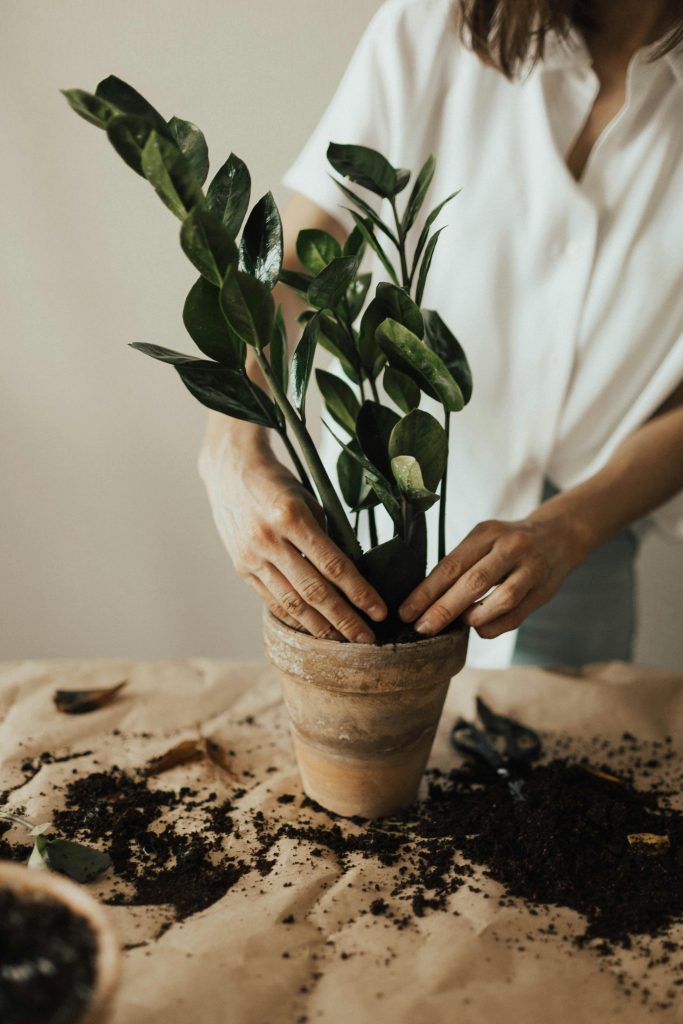Keeping indoor plants clean is essential for their health and appearance. Dust, dirt, pests, and fungal diseases can accumulate on plant leaves and hinder their ability to photosynthesize and thrive. Regular cleaning not only removes these contaminants but also enhances the overall aesthetic of your indoor greenery. In this guide, we’ll explore effective methods for giving your plants a thorough clean to maintain their health and beauty.

- Inspect for Pests and Diseases: Before cleaning your plants, inspect them closely for signs of pests such as aphids, spider mites, mealybugs, or scale insects, as well as any symptoms of fungal diseases such as powdery mildew or leaf spot. If you notice any infestations or diseases, isolate the affected plants and treat them accordingly before proceeding with cleaning to prevent spreading.
- Dusting: Dust can accumulate on plant leaves over time, reducing their ability to absorb sunlight and carry out photosynthesis. Use a soft, damp cloth or sponge to gently wipe down the leaves of your plants, starting from the base and working your way towards the tips. Be gentle to avoid damaging delicate foliage, and avoid using abrasive materials or harsh chemicals that may harm the plant.
- Shower or Rinse: For plants with large or sturdy leaves, such as philodendrons, ferns, or palms, you can give them a thorough shower or rinse to remove dust and dirt. Place the plant in the sink or bathtub and gently spray the leaves with lukewarm water, using a handheld showerhead or spray bottle. Allow the water to run off the leaves, washing away any debris, dust, or pests.
- Soapy Water Solution: For plants with stubborn residue or sticky sap on their leaves, you can use a mild soapy water solution to clean them. Mix a few drops of mild liquid soap or dish detergent with lukewarm water in a spray bottle, and lightly mist the leaves of the plant. Use a soft cloth or sponge to gently wipe away any residue, then rinse the leaves with clean water to remove any soap residue.
- Pruning and Grooming: As part of the cleaning process, take the opportunity to prune away any dead, damaged, or yellowing leaves or stems from your plants. Use clean, sharp pruning shears or scissors to make clean cuts at the base of the affected foliage, removing them entirely. Grooming your plants in this way not only improves their appearance but also promotes healthy growth and prevents the spread of disease.
- Treating Pests and Diseases: If you discover pests or diseases during the cleaning process, take appropriate measures to treat and control them. Depending on the severity of the infestation or infection, you may need to use natural remedies such as neem oil, insecticidal soap, or horticultural oil, or consult with a professional for guidance on treatment options.
- Maintain a Clean Environment: In addition to cleaning your plants regularly, maintain a clean and tidy environment around them to prevent dust and debris from accumulating. Dust surfaces, vacuum or sweep floors, and keep windows and vents clean to minimize airborne contaminants that can settle on plant leaves. Providing adequate air circulation and humidity levels can also help keep plants healthy and reduce the risk of pest and disease problems.
Giving your plants a good clean on a regular basis is essential for maintaining their health, vitality, and beauty. By removing dust, dirt, pests, and diseases from plant leaves, you can ensure optimal photosynthesis, growth, and overall well-being. Incorporate these tips into your plant care routine to keep your indoor greenery looking its best and thriving for years to come.



